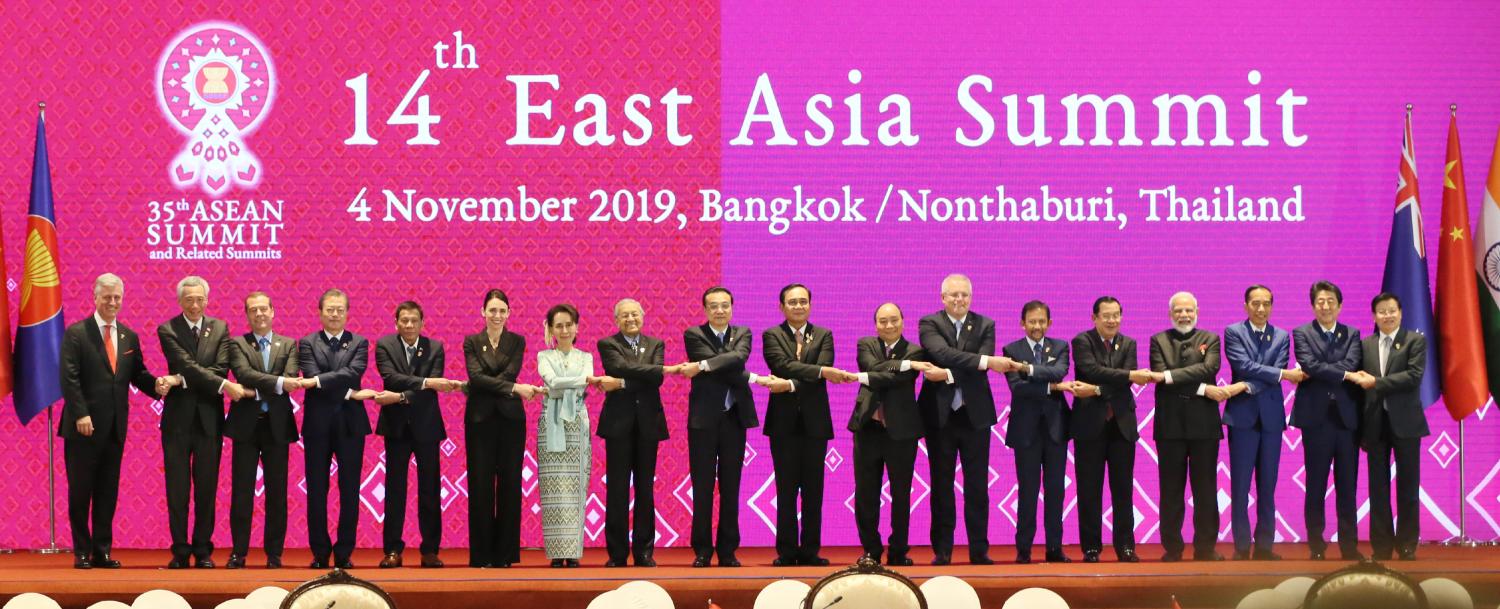Executive Summary
 Chinese President Xi Jinping first laid out a new vision for Asian regional architecture in a 2014 speech to the Conference on Interaction and Confidence-Building Measures in Asia (CICA), a pan-Asian multilateral security organization. Xi argued, “it is for the people of Asia to run the affairs of Asia, solve the problems of Asia, and uphold the security of Asia.”1 Xi’s speech was the first signal of Beijing’s more focused effort to alter the institutional scaffolding, or the security architecture, supporting the Asia-Pacific regional order. To achieve this goal, China is seeking to contest the “network power” that has enabled American leadership in the Asia-Pacific.2
Chinese President Xi Jinping first laid out a new vision for Asian regional architecture in a 2014 speech to the Conference on Interaction and Confidence-Building Measures in Asia (CICA), a pan-Asian multilateral security organization. Xi argued, “it is for the people of Asia to run the affairs of Asia, solve the problems of Asia, and uphold the security of Asia.”1 Xi’s speech was the first signal of Beijing’s more focused effort to alter the institutional scaffolding, or the security architecture, supporting the Asia-Pacific regional order. To achieve this goal, China is seeking to contest the “network power” that has enabled American leadership in the Asia-Pacific.2
This paper explores China’s bid to contest this network power by reorienting the Asia-Pacific security architecture. It argues that, in a sense, China is taking a page from America’s own playbook: It is seeking to build a multilayered network of security institutions, partnerships, and cooperative activities that enhance its regional influence.
China’s ambitions are to establish a security architecture that is more exclusively “Asian,” free of alliances, more attendant to its domestic security concerns, less liberal, and solidly rooted in Chinese economic power. These ambitions are not new, but under Xi, China is more actively focused on how to operationalize and institutionalize its vision.
China’s strategy to shape a new regional security network is nascent and has yielded mixed results thus far. This paper suggests Beijing faces a series of obstacles that stand in the way of its aims, including its inability to convince Asian partners that China can be a fair and trustworthy security guarantor, the institutional resilience of existing structures such as U.S. alliances and the Association of Southeast Asian Nations (ASEAN), and the backlash against China’s aggressive territorial ambitions. Nonetheless, Beijing is creating alternatives — security partnerships, institutions, and principles — that are generating a stronger sense of Asian integration, and that have particular appeal for authoritarian leaders less aligned with a liberal system. Additionally, China is increasingly spreading new tools and practices — selling conventional arms and dual-use technologies, as well as enhancing its focus on training and exercises to support these tools — that have the potential to reorient regional institutions and standards over time.
While the United States remains the security partner of choice for many Asia-Pacific countries, U.S. policymakers cannot afford to rest on the laurels of the network power the United States built during the 20th century. As Beijing works to cultivate an alternative security network, U.S. policymakers will need to reassess the necessary institutional investments the United States should make to preserve its interests. These include modernizing U.S. alliances, enhancing support for open and transparent domestic governance, reinvesting in Asian institutions, and refocusing on public diplomacy.
-
Footnotes
- Xi Jinping, “New Asian security concept for new progress in security cooperation,” (speech, Shanghai, China, May 21, 2014), https://www.fmprc.gov.cn/mfa_eng/zxxx_662805/t1159951.shtml.
- Victor D. Cha, Powerplay: The Origins of the American Alliance System in Asia (Princeton, NJ: Princeton University Press, 2016).




